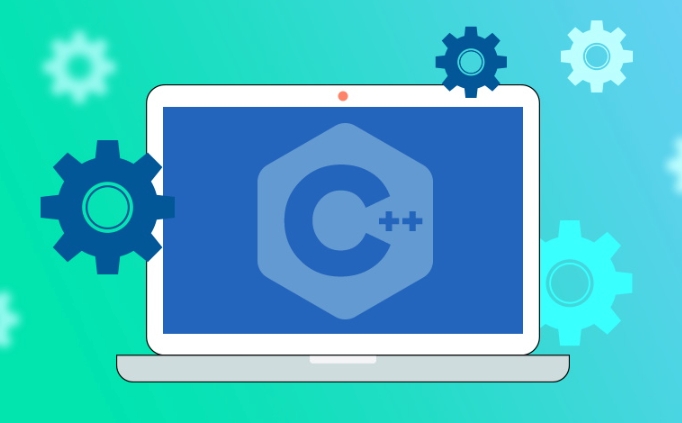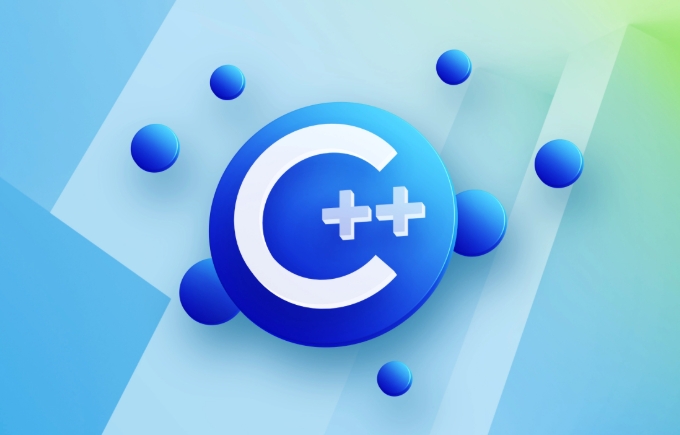How to use OpenCV with C for image processing?
Jul 09, 2025 am 02:22 AMUsing OpenCV and C for image processing is not complicated. You can quickly get started by mastering the basic process and common functions. 1. Installation and environment configuration: Ensure that OpenCV is installed correctly, Linux can be installed with package manager, Windows can use vcpkg or manually configure the path, and test whether it is normal through a simple program; 2. Basic image operations: use cv::imread() to read, cv::imshow() to display, cv::imwrite() to save the image, and pay attention to the necessity of path judgment and waitKey(); 3. Common image processing operations: including grayscale, Gaussian blur, Canny edge detection and threshold processing, which are usually used in the preprocessing stage; 4. Custom convolution kernel filtering: Flexible filtering is realized through cv::filter2D(), such as sharpening operations, and the boundary processing method can be set. After mastering these contents, you can carry out actual image processing tasks.

Using OpenCV and C for image processing is actually not complicated. As long as you master the basic process and commonly used functions, you can get started quickly. OpenCV provides rich image processing functions, which can be easily implemented from reading and displaying images to filtering, edge detection and other operations.

Below are some common usage scenarios and suggestions, suitable for C developers who are new to OpenCV.

1. Installation and Environment Configuration
Before you start, you must first make sure that OpenCV is installed and configured correctly in your development environment.
A common practice is to use a package manager to install it (such as using apt-get install libopencv-dev on Ubuntu), or download the source code from the official website and compile it yourself.
If you are using Visual Studio on Windows, you can configure the include path, lib file, and dll file locations with vcpkg or manually.

Tip: After the configuration is completed, write a simple "Read and display pictures" program to test whether it works normally.
2. Basic operations of images: read, display, save
The most basic image operations in OpenCV include reading images, displaying images, and saving results.
- Read image files using
cv::imread() - Use
cv::imshow()to display the image window - Use
cv::imwrite()to save the processed image
cv::Mat img = cv::imread("input.jpg");
cv::imshow("Image", img);
cv::waitKey(0); // Wait for the key press to prevent the window from closing cv::imwrite("output.jpg", img);What should be noted is:
- If the path is wrong or the file is corrupt, the Mat object returned
imread()will be empty, and it is best to add judgment logic. -
waitKey()is required, otherwise the image window may flash by.
3. Common image processing operations
OpenCV provides many commonly used image processing functions, and the following are some typical applications:
- Grayscale :
cv::cvtColor(src, dst, cv::COLOR_BGR2GRAY); - Gaussian fuzzy :
cv::GaussianBlur(src, dst, cv::Size(5,5), 0); - Edge detection (Canny) :
cv::Canny(src, dst, 100, 200); - Threshold processing :
cv::threshold(src, dst, 128, 255, cv::THRESH_BINARY);
These operations are usually used in the image preprocessing stage to prepare for subsequent object recognition and feature extraction.
For example, in edge detection, converting it to a grayscale diagram first and then calling Canny is better, which is a detail that many beginners are likely to ignore.
4. Customize the convolution kernel for filtering
If you want to perform more flexible filtering operations on images, you can use the cv::filter2D() function to customize the convolution kernel.
For example, create a sharpening filter:
cv::Mat kernel = (cv::Mat_<float>(3,3) <<
0, -1, 0,
-1, 5, -1,
0, -1, 0);
cv::filter2D(src, dst, -1, kernel);This operation is often used to enhance image details, but pay attention to the boundary processing method, which can be controlled by setting the borderType parameter.
Basically that's all. After mastering these common operations, you can do some actual image processing tasks. Not complicated, but there are some small details that are easy to ignore.
The above is the detailed content of How to use OpenCV with C for image processing?. For more information, please follow other related articles on the PHP Chinese website!

Hot AI Tools

Undress AI Tool
Undress images for free

Undresser.AI Undress
AI-powered app for creating realistic nude photos

AI Clothes Remover
Online AI tool for removing clothes from photos.

Clothoff.io
AI clothes remover

Video Face Swap
Swap faces in any video effortlessly with our completely free AI face swap tool!

Hot Article

Hot Tools

Notepad++7.3.1
Easy-to-use and free code editor

SublimeText3 Chinese version
Chinese version, very easy to use

Zend Studio 13.0.1
Powerful PHP integrated development environment

Dreamweaver CS6
Visual web development tools

SublimeText3 Mac version
God-level code editing software (SublimeText3)

Hot Topics
 What is high-frequency virtual currency trading? The principles and technical implementation points of high-frequency trading
Jul 23, 2025 pm 11:57 PM
What is high-frequency virtual currency trading? The principles and technical implementation points of high-frequency trading
Jul 23, 2025 pm 11:57 PM
High-frequency trading is one of the most technologically-rich and capital-intensive areas in the virtual currency market. It is a competition about speed, algorithms and cutting-edge technology that ordinary market participants are hard to get involved. Understanding how it works will help us to have a deeper understanding of the complexity and specialization of the current digital asset market. For most people, it is more important to recognize and understand this phenomenon than to try it yourself.
 Explain RAII in C
Jul 22, 2025 am 03:27 AM
Explain RAII in C
Jul 22, 2025 am 03:27 AM
RAII is an important technology used in resource management in C. Its core lies in automatically managing resources through the object life cycle. Its core idea is: resources are acquired at construction time and released at destruction, thereby avoiding leakage problems caused by manual release. For example, when there is no RAII, the file operation requires manually calling fclose. If there is an error in the middle or return in advance, you may forget to close the file; and after using RAII, such as the FileHandle class encapsulates the file operation, the destructor will be automatically called after leaving the scope to release the resource. 1.RAII is used in lock management (such as std::lock_guard), 2. Memory management (such as std::unique_ptr), 3. Database and network connection management, etc.
 C vector get first element
Jul 25, 2025 am 12:35 AM
C vector get first element
Jul 25, 2025 am 12:35 AM
There are four common methods to obtain the first element of std::vector: 1. Use the front() method to ensure that the vector is not empty, has clear semantics and is recommended for daily use; 2. Use the subscript [0], and it also needs to be judged empty, with the performance comparable to front() but slightly weaker semantics; 3. Use *begin(), which is suitable for generic programming and STL algorithms; 4. Use at(0), without manually null judgment, but low performance, and throw exceptions when crossing the boundary, which is suitable for debugging or exception handling; the best practice is to call empty() first to check whether it is empty, and then use the front() method to obtain the first element to avoid undefined behavior.
 How to develop AI-based text summary with PHP Quick Refining Technology
Jul 25, 2025 pm 05:57 PM
How to develop AI-based text summary with PHP Quick Refining Technology
Jul 25, 2025 pm 05:57 PM
The core of PHP's development of AI text summary is to call external AI service APIs (such as OpenAI, HuggingFace) as a coordinator to realize text preprocessing, API requests, response analysis and result display; 2. The limitation is that the computing performance is weak and the AI ecosystem is weak. The response strategy is to leverage APIs, service decoupling and asynchronous processing; 3. Model selection needs to weigh summary quality, cost, delay, concurrency, data privacy, and abstract models such as GPT or BART/T5 are recommended; 4. Performance optimization includes cache, asynchronous queues, batch processing and nearby area selection. Error processing needs to cover current limit retry, network timeout, key security, input verification and logging to ensure the stable and efficient operation of the system.
 C bit manipulation example
Jul 25, 2025 am 02:33 AM
C bit manipulation example
Jul 25, 2025 am 02:33 AM
Bit operation can efficiently implement the underlying operation of integers, 1. Check whether the i-th bit is 1: Use n&(1
 C function example
Jul 27, 2025 am 01:21 AM
C function example
Jul 27, 2025 am 01:21 AM
Functions are the basic unit of organizing code in C, used to realize code reuse and modularization; 1. Functions are created through declarations and definitions, such as intadd(inta,intb) returns the sum of the two numbers; 2. Pass parameters when calling the function, and return the result of the corresponding type after the function is executed; 3. The function without return value uses void as the return type, such as voidgreet(stringname) for outputting greeting information; 4. Using functions can improve code readability, avoid duplication and facilitate maintenance, which is the basic concept of C programming.
 Understanding the C ABI
Jul 24, 2025 am 01:23 AM
Understanding the C ABI
Jul 24, 2025 am 01:23 AM
C ABI is the underlying rule that the compiler follows when generating binary code, which determines mechanisms such as function calls, object layout, name adaptation, etc. 1. It ensures that different compilation units interact correctly, 2. Different compilers or versions may adopt different ABIs, affecting dynamic library links, STL transfers, virtual function calls, etc. 3. Cross-platform development, long-term system maintenance, third-party library use and other scenarios need to pay special attention to ABI consistency, 4. ABI can be controlled through macro definitions and compilation options, and use tools to view the symbol table to judge consistency.
 C std::is_same example
Jul 24, 2025 am 03:22 AM
C std::is_same example
Jul 24, 2025 am 03:22 AM
std::is_same is used to determine whether the two types are exactly the same at compile time and return a bool value. 1. In the basic usage, std::is_same::value is true when T and U are exactly the same, otherwise it is false. Different modifiers such as const, reference, pointer, etc. will cause false; 2. You can remove the type modification with std::remove_const, std::remove_reference and other types, and then compare it to achieve more flexible type judgment; 3. It is often used in template metaprogramming in practical applications, such as conditional compilation with ifconstexpr, and perform different logic according to different types; 4.






